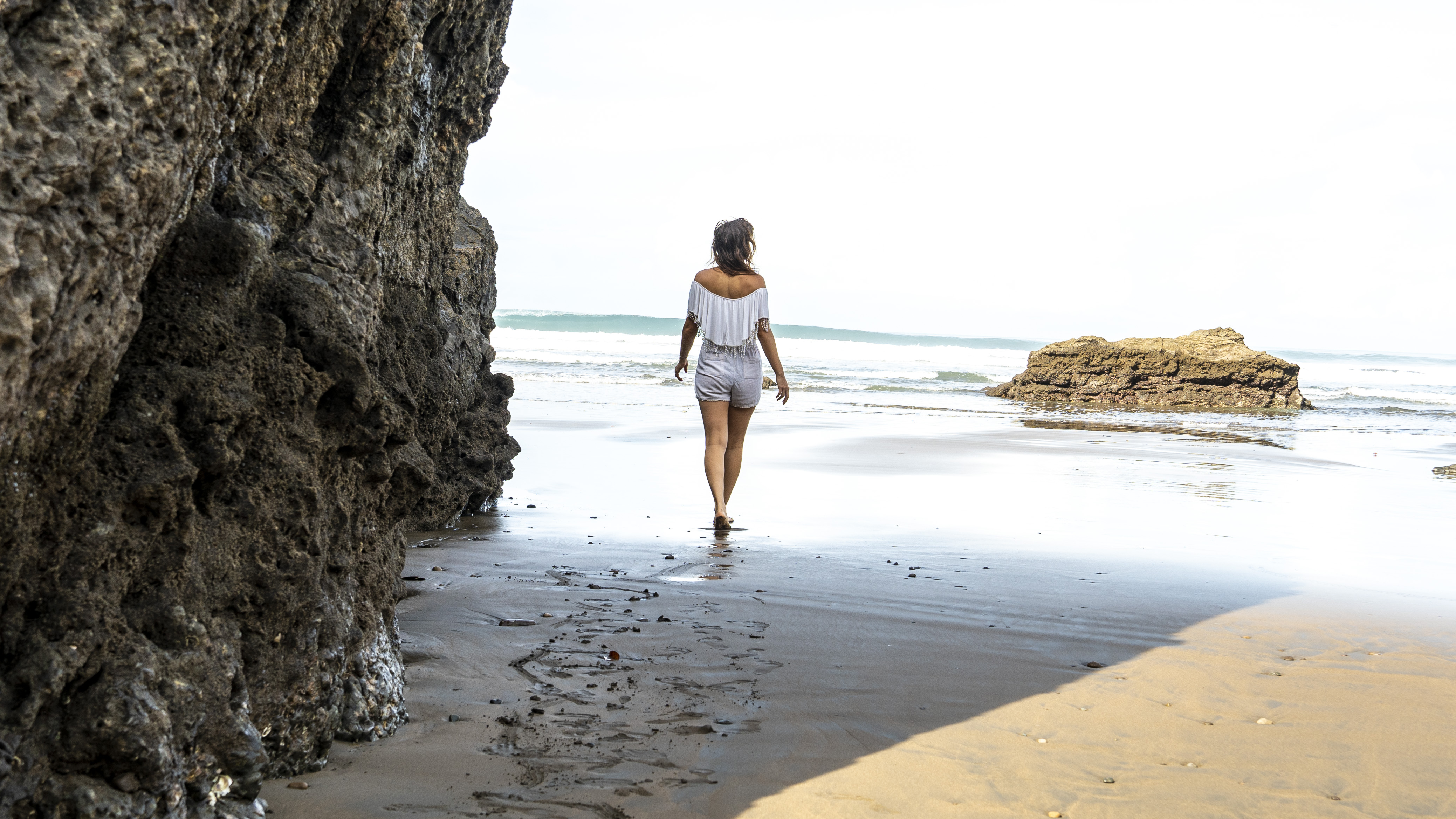There is an island in southern Costa Rica that is uncovered when the tide is low. Early one morning, I woke up to make the two mile trek to the beach. A pathway formed by stepping rocks led the way to the little island. Once there, I explored the island, collected shells, climbed over crags and stones. Then the tide began to rise. I gathered my things to leave and departed. But I underestimated how quickly the tide would rise and obscure the path home.
A rush of anxiety and urgency flowed over me. I moved as quickly as I could on the slippery rocks. Halfway there, stuck in the middle, I remember this feeling of defeat root me in place. I thought, I don’t want to do this anymore. I felt stressed and panicked, and I wanted these feelings to end. Should I go back?
That image of me, stuck on a disappearing path, reminds me of many times in my life when I have thought about “changing directions” in school, work, and relationships—when I have considered giving up. This is me frantically searching for self-protection, an ultimately self-sabotaging practice.
Being on the rocks in the middle of a disappearing path, I had two options. One, I could give up and stay right where I was, leaving myself stuck and in deeper and deeper water. Or two, keep moving. Place one foot in front of the other. I realized, the only person who could get me out of there was me.
I took a deep breath and decided to save myself. As the water kept rising, I still felt anxious and hurried but this time was bolstered with determination. I focused only on the next step I needed to take. Just as the last rocks submerged, I made it to shore.
For me, this was a lesson in perseverance. It had a profound impact on my self-worth. On the other side of discomfort and difficulty are self-confidence and value. Keep taking the steps, even if the path seems unclear. Eventually, you’ll make it to the shore. By making a decision and trusting, you strengthen the belief you have in yourself. The next time you feel overwhelmed, remind yourself that all you have to do is take the next step.


